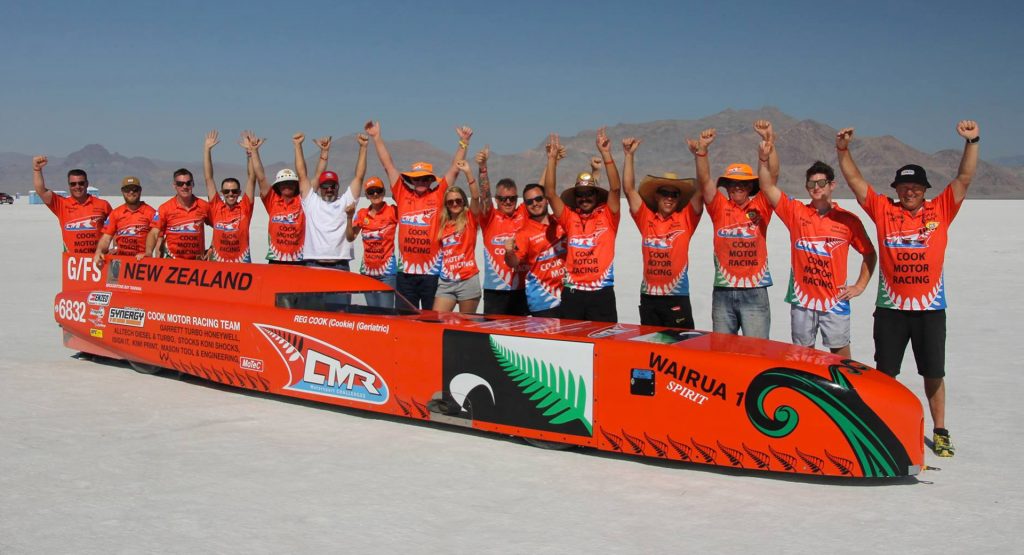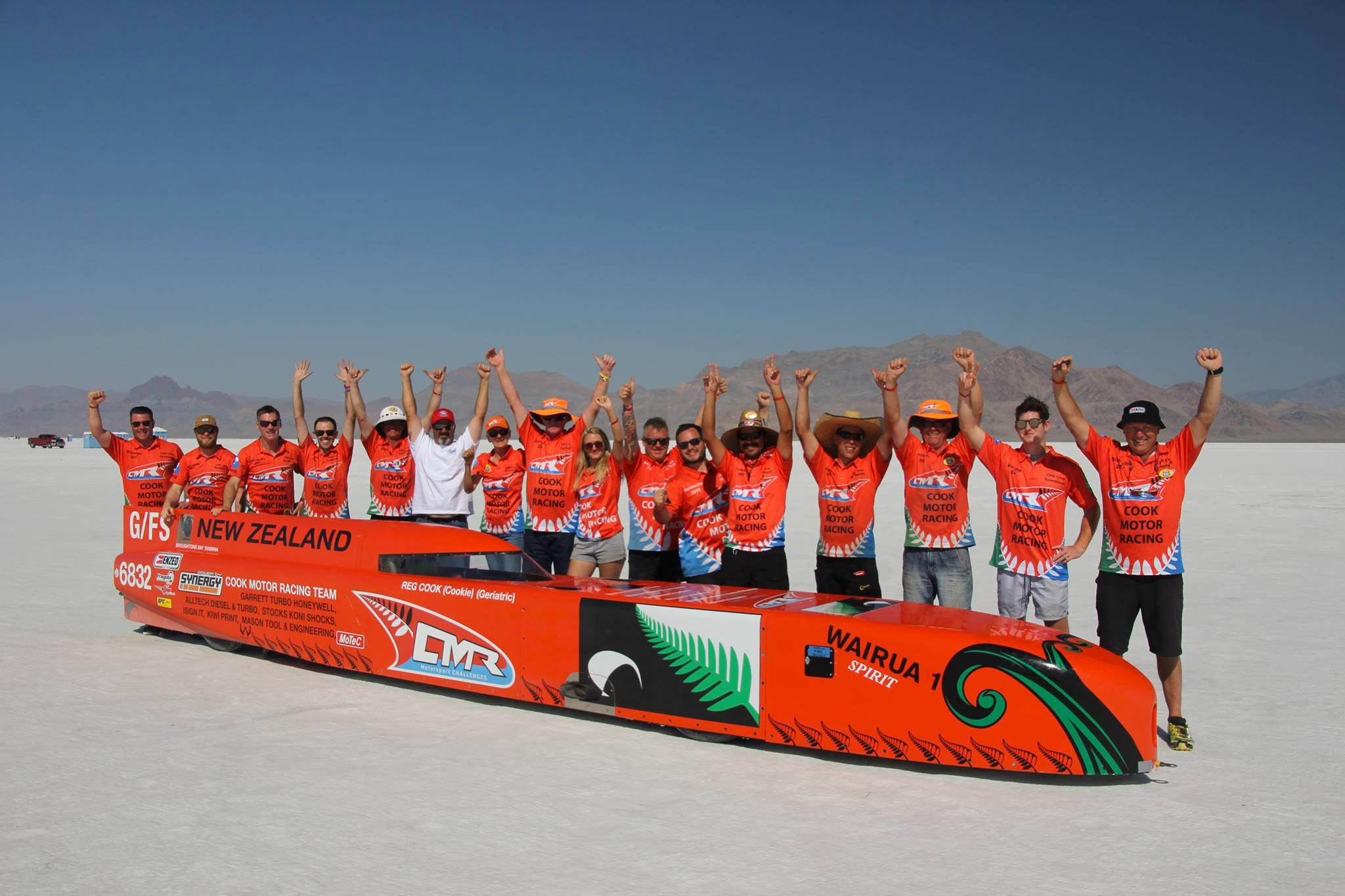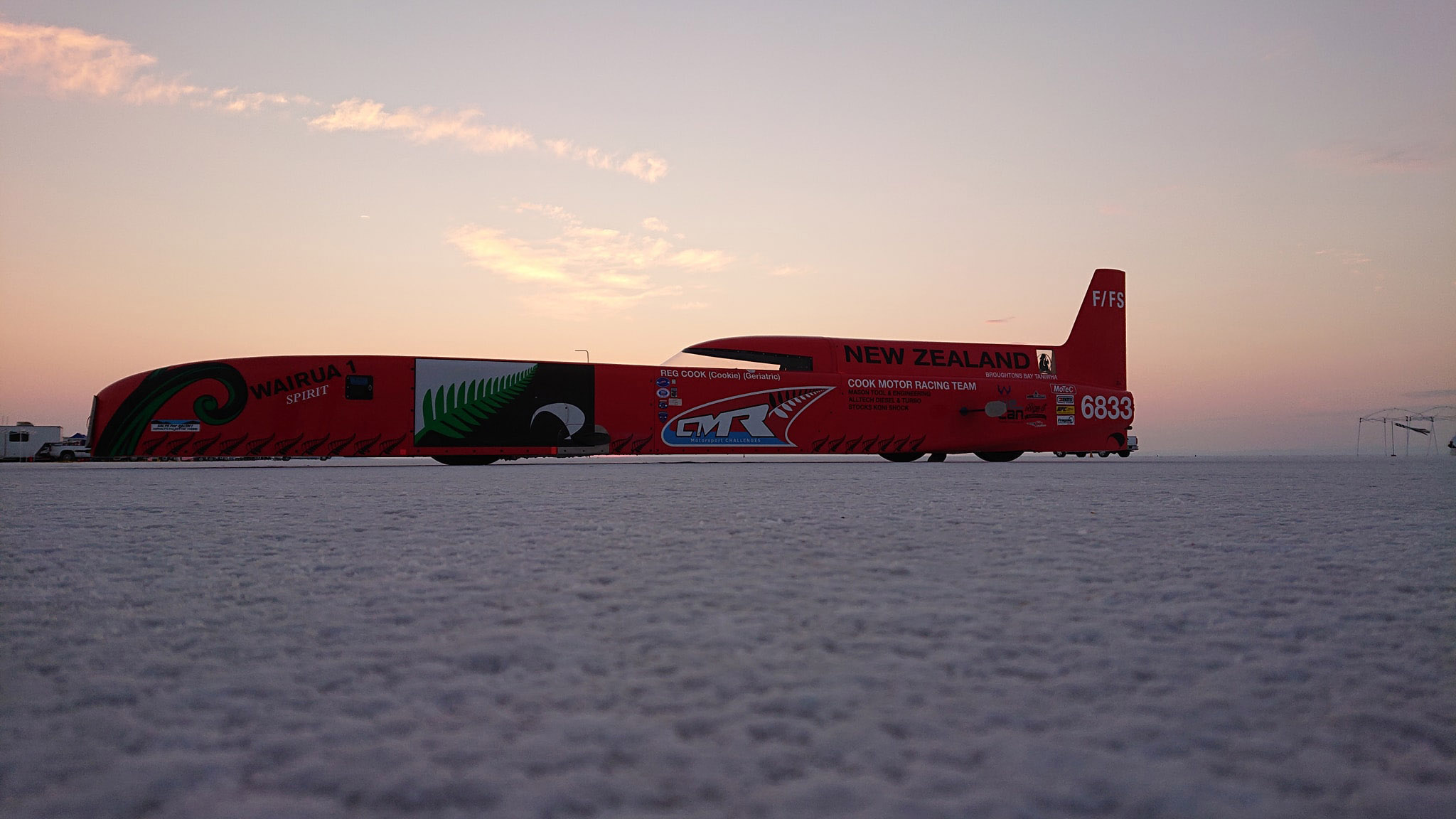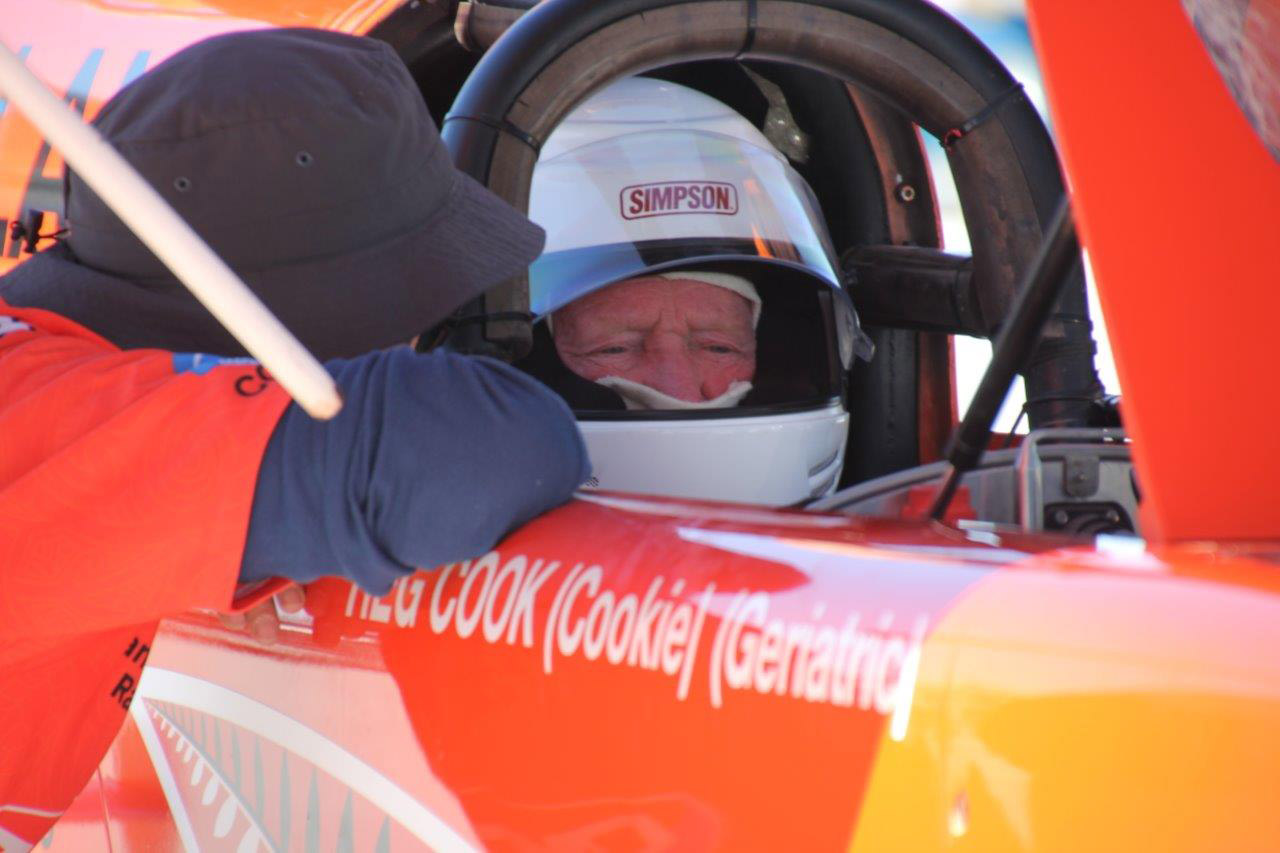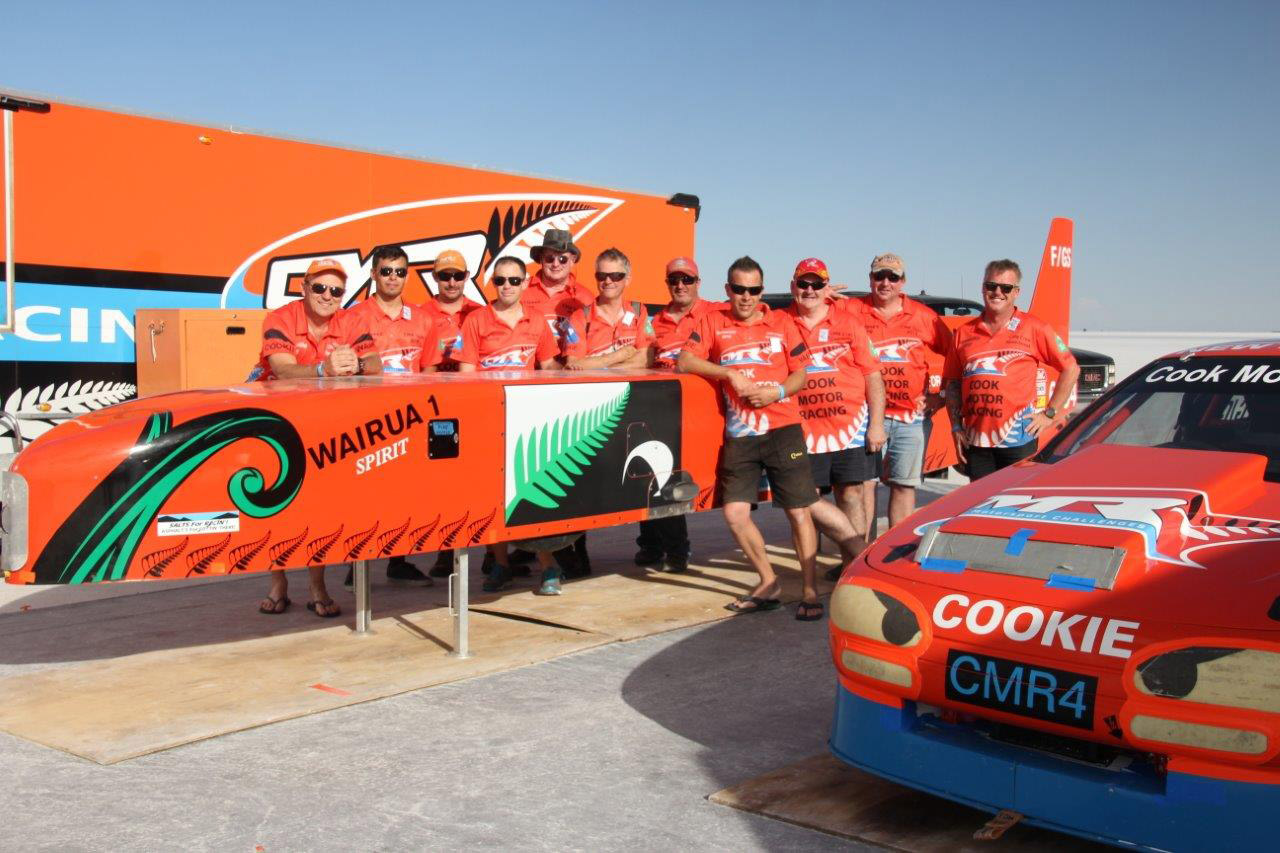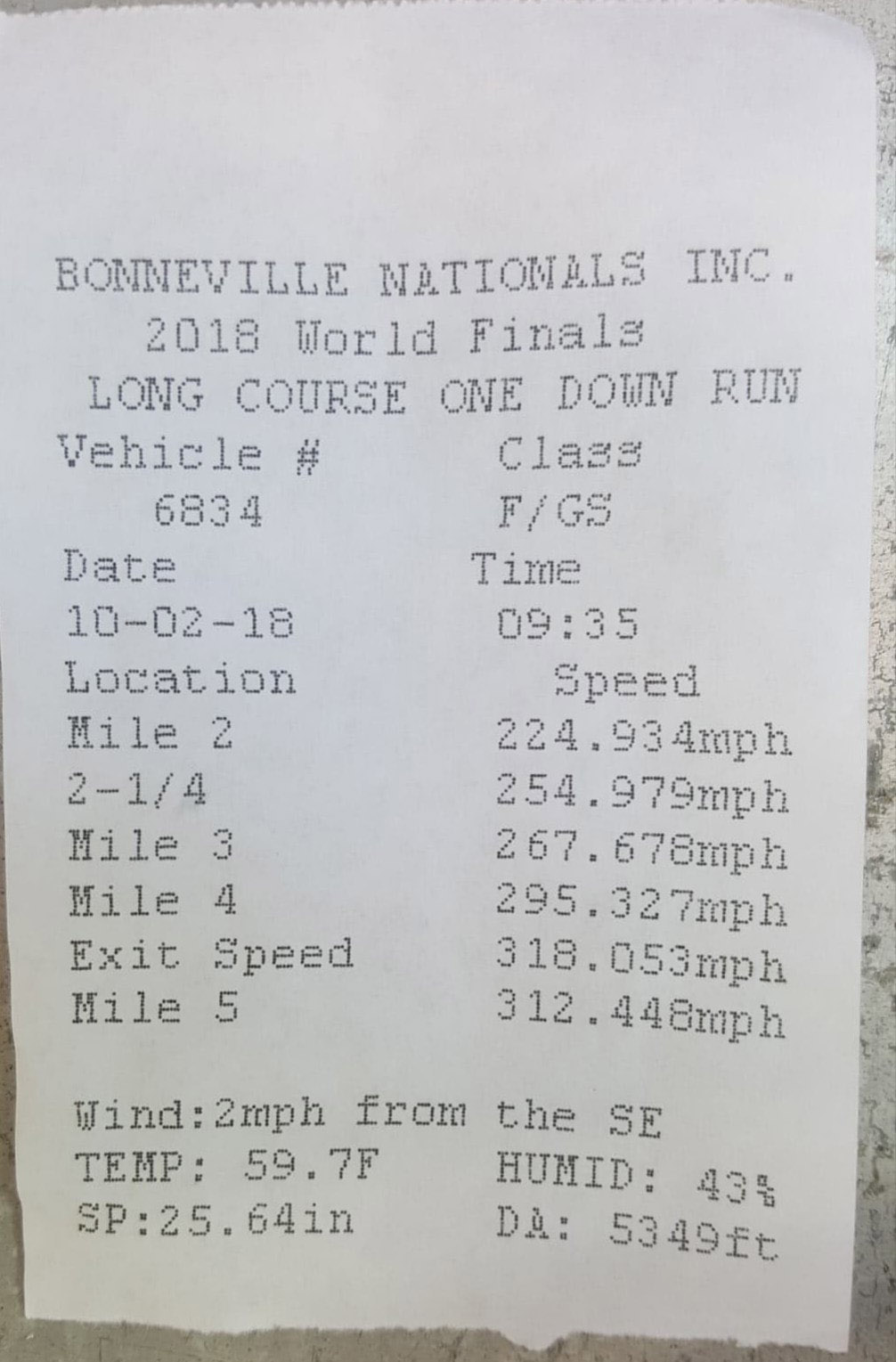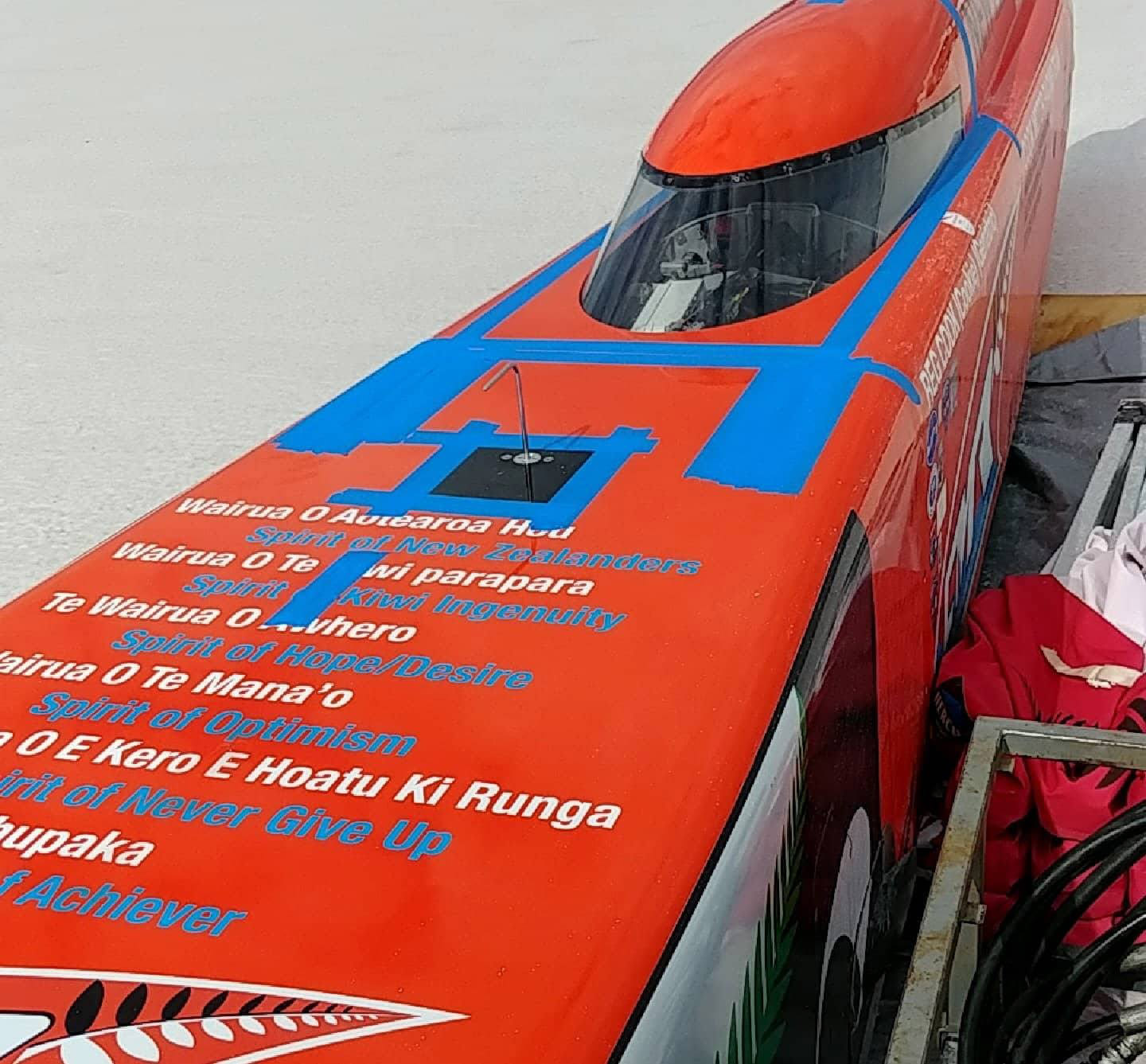Formula One cars, it may seem obvious to state, are made for speed. But not for outright terminal velocity: they’re designed to go around a twisting and turning track as quick as possible. Which leads us to wonder how fast an F1 engine could propel a vehicle if it were unleashed for that purpose, and that purpose alone.
Well now we need wonder no more. The Cook Motor Racing Team built a streamliner with an F1-spec V10 engine built by Judd and took it to the salt flats at Bonneville for the 2018 World Finals, where it was officially certified to have cracked 318 miles per hour (512 km/h).
That’s a heck of a lot faster than today’s grand-prix racers have managed – even at the high-speed circuit of Monza (the fastest track on the calendar), where they’ve managed 224 mph (360 km/h) on the long straight. Even in the V10 era back in the mid-2000s (when this Judd engine was made), the top speed ever achieved (again, at Monza) was 231 mph (372 km/h).
In that context, the CMR team’s achievement in Bonneville is rather impressive, to say the least. What’s more is that weather conditions prevented the team from making additional runs that might have resulted in an even higher speed, and potentially a new world record (of some sort or another).
It was still enough, though, to make its driver/owner Reg Cook the fastest Kiwi in history – something of which fellow New Zealand native Burt Munro and his World’s Fastest Indian might be proud. And we have a feeling that Bruce McLaren might be smiling down on the endeavor, too.







